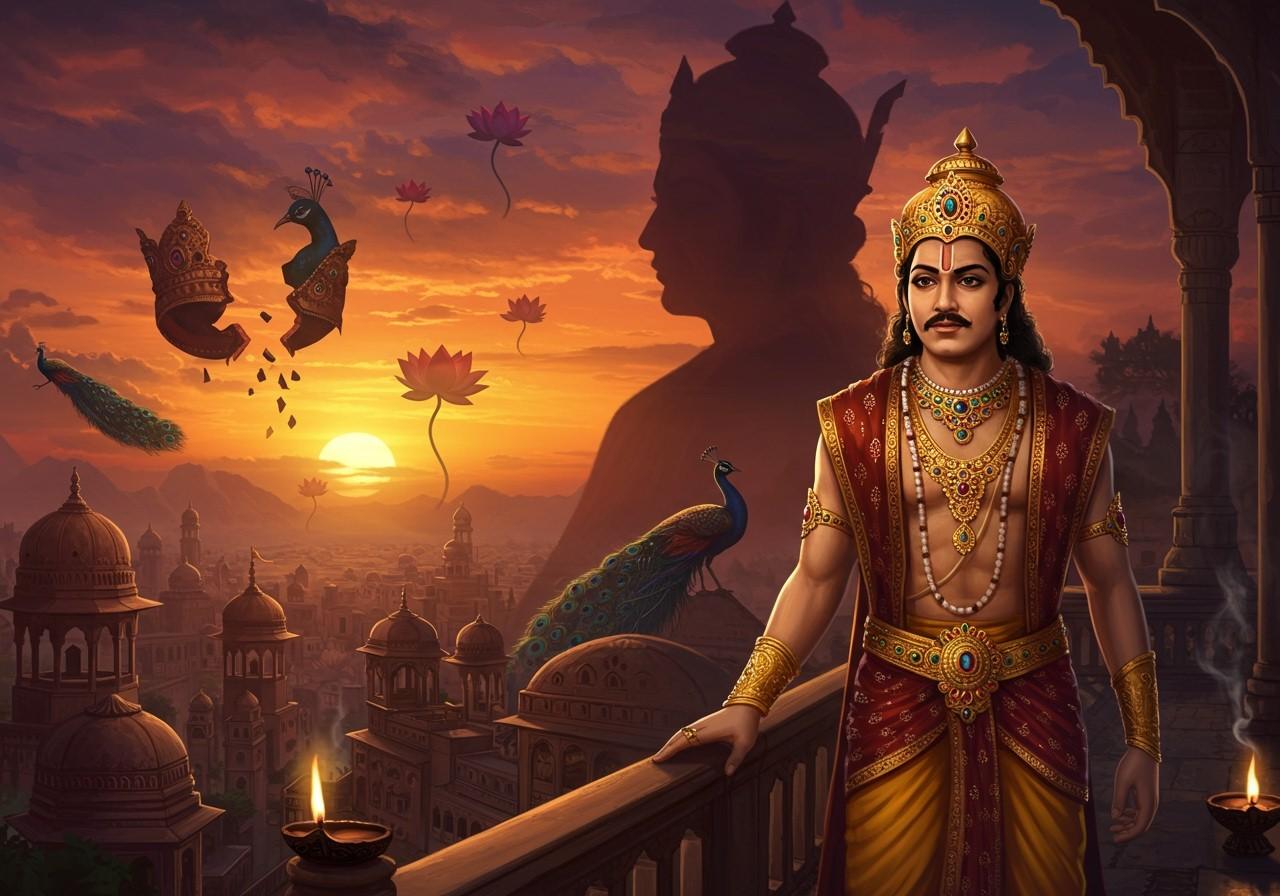
Ajatashatru, a pivotal figure in Indian history, is renowned for his ruthless ascent to power, marked by patricide. This blog chronicles his transformation from prince to one of the most powerful rulers of the Magadha Empire (circa 684 BCE to 320 BCE). We’ll explore his lineage, his kingdom, and the profound impact he had on the Indian subcontinent. Understanding Ajatashatru’s narrative offers valuable insights into ancient Indian politics, warfare, and governance.
Who was Ajatashatru?
Ajatashatru, son of King Bimbisara of the Haryanka dynasty, reigned over the Magadha Empire from approximately 492 to 460 BCE. His early life was characterized by a complex relationship with his father, who oversaw his training in statecraft and military strategy. The competitive political landscape of Magadha significantly shaped Ajatashatru’s ambitions and strategies.
Influenced by his mother, Queen Chellana, Ajatashatru committed patricide, assassinating Bimbisara. This act, while ruthless, also revealed his strategic acumen. From a young age, Ajatashatru possessed a clear vision for the Magadha Empire, focused on expansion and dominance.
Ajatashatru’s Dynasty: The Haryanka Dynasty
The Haryanka dynasty occupies a prominent place in Indian history, with deep roots in the ancient past. Ajatashatru’s lineage boasts notable rulers who established the dynasty’s strength. The Haryanka dynasty witnessed substantial political and territorial growth, a trend that Ajatashatru continued during his reign.
Ajatashatru implemented administrative and military reforms that bolstered the empire. His rule was a period of economic prosperity and cultural flourishing, with patronage extended to both Buddhism and Jainism. The legacy of Ajatashatru set a powerful precedent for future generations.
Ajatashatru’s Kingdom: The Magadha Empire
Under Ajatashatru’s rule, the Magadha Empire encompassed a vast territory. The capital city, Rajagriha, played a central role in his governance and strategic planning. Ajatashatru led victorious military campaigns against the Licchavis and the Vajji confederacy, consolidating his power.
He fortified Rajagriha and constructed a fortress at Pataligrama, which later evolved into Pataliputra, a strategically crucial city. Ajatashatru skillfully employed diplomacy to expand his empire and maintained a robust administrative framework. Trade and commerce thrived under his leadership, contributing to the prosperity of the Magadha Empire.
Ajatashatru’s contributions to architecture are also noteworthy. The fortifications and urban design of Pataliputra served as a model for subsequent constructions. His support for the arts, education, and religion established Magadha as a center of cultural development.
Impact and Legacy of Ajatashatru
Ajatashatru’s reign left an enduring impact on the Magadha Empire and the course of Indian history. His military strategies influenced subsequent rulers and warfare tactics. His rule also significantly contributed to the propagation of Buddhism and Jainism.
Architectural advancements during his time, such as fortifications and urban planning, were substantial. Ajatashatru’s successors continued many of his policies, ensuring the empire’s continued prosperity.
Historical accounts, including Buddhist scriptures, document Ajatashatru’s reign, offering insights into his methods and decisions. While his act of patricide and ruthless tactics present moral complexities, they reflect the harsh realities of ancient Indian politics. Ajatashatru’s story endures in modern Indian culture and history as a narrative of ambition, strategy, and power.
Connecting with History through Poojn.in
Poojn.in, India’s largest cultural goods and services store, offers a unique opportunity to connect with the historical and spiritual facets of Ajatashatru’s era. Explore our diverse collection, including:
-
Brass Statues and Idols: Discover exquisite brass statues, reminiscent of the artistry prevalent during Ajatashatru’s reign. These pieces serve as a tangible link to the rich artistic traditions of ancient India, allowing you to bring a piece of history into your home.
-
Pooja Asans (Prayer Mats): Enhance your meditation and spiritual practices with authentic pooja asans, similar to those used in ancient times. These mats provide a dedicated space for reflection and connection with the spiritual heritage of the Magadha Empire.
-
Incense and Dhoop: Immerse yourself in the aromatic traditions of ancient India with our selection of incense sticks and dhoop. These fragrant offerings create a serene atmosphere for prayer and meditation, evoking the spiritual ambiance of Ajatashatru’s time.
Visit Poojn.in today to explore our comprehensive collection and enrich your understanding of this significant historical period. Our products are carefully curated for authenticity and quality, ensuring you receive items that honor both tradition and contemporary needs.
FAQs on Ajatashatru
Who was Ajatashatru? Ajatashatru, a king of the Haryanka dynasty, reigned over the ancient kingdom of Magadha, known for his military conquests and expansion of the empire, ruling from approximately 492 to 460 BCE.
What was Ajatashatru’s dynasty? Ajatashatru belonged to the Haryanka dynasty, prominent rulers of Magadha in ancient India, contributing significantly to the empire’s growth.
Where was Ajatashatru’s kingdom? Ajatashatru ruled Magadha, a region in ancient India now part of modern-day Bihar, one of the most powerful and influential kingdoms in Indian history.
How did Ajatashatru come to power? Ajatashatru’s rise to power involved overthrowing and killing his father, King Bimbisara, an act of patricide that marked the beginning of his reign and expansion of the kingdom.
What were Ajatashatru’s major achievements? Ajatashatru expanded Magadha by conquering territories like Kosala and the Vrijji confederation. He also strengthened the kingdom’s military and administrative systems, and built the fortress of Pataligrama, which became Pataliputra.
Why is Ajatashatru a significant historical figure? Ajatashatru’s significance lies in his role in expanding and consolidating the Magadha kingdom, impacting the political landscape of ancient India. His reign marked substantial growth and development.
Did Ajatashatru have any connection with Buddhism? Yes, Ajatashatru was a contemporary of Lord Buddha and participated in the First Buddhist Council after Buddha’s death.
What is the legacy of Ajatashatru? Ajatashatru’s legacy rests on his contributions to the expansion and consolidation of the Magadha kingdom. His reign paved the way for the rise of the Maurya Empire, one of India’s largest empires.


